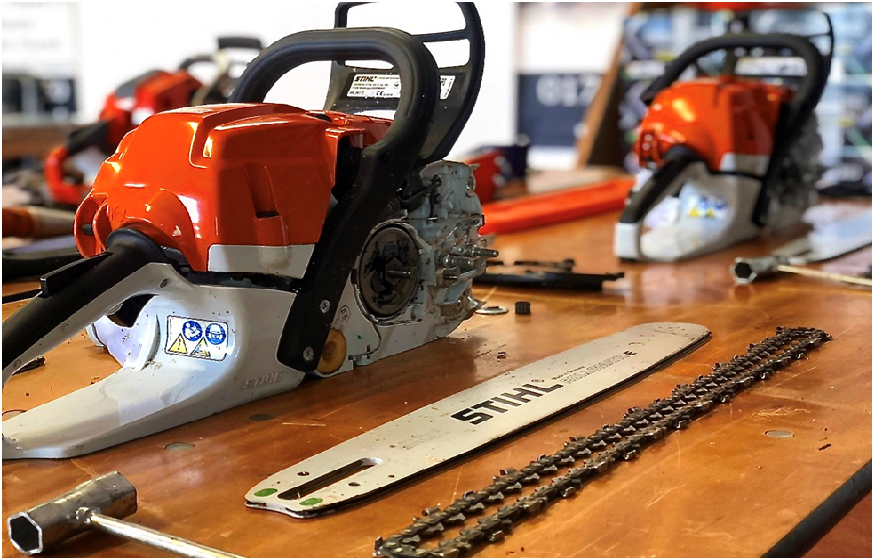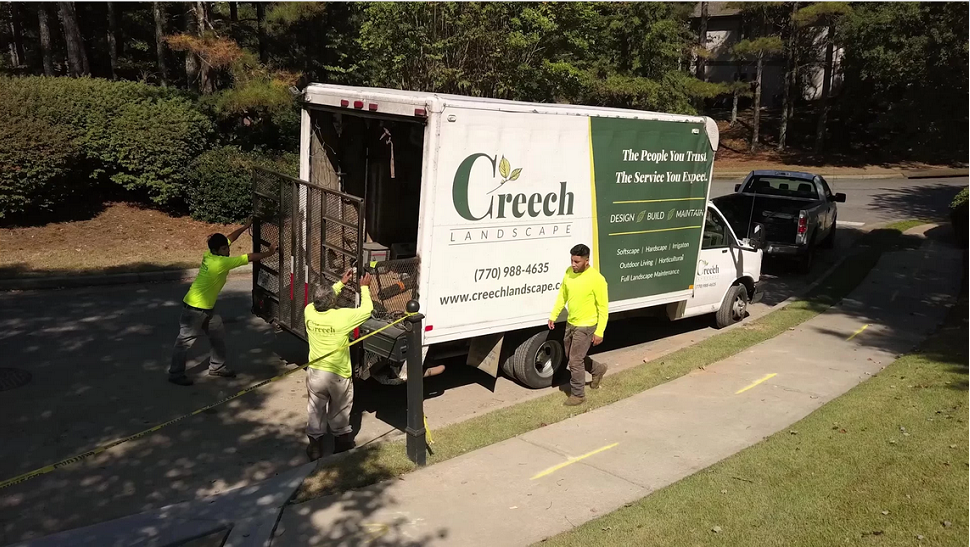In the world of tree surgery and forestry, the chainsaw is an indispensable tool. However, its power and potential for danger make proper training essential for anyone looking to use it professionally or even for personal use. This comprehensive guide will explore the importance of chainsaw training, the types of courses available, and how to choose the right program for your needs.
Why Chainsaw Training is Crucial
Chainsaws are powerful tools that require skill and knowledge to operate safely. Without proper training, users risk serious injury to themselves and others, as well as potential damage to property. Here’s why chainsaw training is so important:
- Safety: Learn proper techniques to minimize the risk of accidents.
- Efficiency: Discover how to use a chainsaw effectively for various tasks.
- Compliance: Meet legal requirements for professional use.
- Confidence: Gain the skills needed to handle a chainsaw with assurance.
- Career advancement: Obtain certifications that can boost your professional prospects.
Types of Chainsaw Training Courses
There are several types of chainsaw training courses available, catering to different skill levels and specific needs. Here are some of the most common:
Chainsaw Maintenance and Cross-Cutting (CS30)
This foundational course is essential for anyone looking to use a chainsaw professionally. It covers:
- Basic chainsaw maintenance
- Safety features and their importance
- Correct starting procedures
- Cross-cutting techniques for felled timber
Felling Trees Up To 380mm (CS31)
Building on the skills learned in CS30, this course focuses on:
- Assessing trees and surrounding areas for potential hazards
- Planning felling operations
- Techniques for felling small trees safely
- Removing branches and crown
Ground-Based Chainsaw Operator (CS30/31)
This comprehensive course combines the content of CS30 and CS31, providing a thorough grounding in chainsaw operation. It’s ideal for those new to the industry or looking to formalize their skills.
Felling Trees Over 380mm (CS32)
For more experienced operators, this advanced course covers:
- Techniques for felling larger trees
- Dealing with hung-up trees
- Advanced cutting methods
- Use of felling aids
Choosing the Right Chainsaw Training Course
Selecting the appropriate training course depends on several factors:
- Experience level: Beginners should start with basic courses like CS30, while experienced operators might benefit from advanced courses.
- Professional requirements: Check industry standards and legal requirements for your specific field.
- Course provider reputation: Look for established training providers with experienced instructors.
- Certification: Ensure the course offers recognized certifications, such as NPTC qualifications.
- Practical components: Hands-on experience is crucial, so choose courses with substantial practical elements.
The Benefits of Professional Chainsaw Training
Investing in professional chainsaw training offers numerous advantages:
- Improved safety: Learn to identify and mitigate risks associated with chainsaw use.
- Enhanced skills: Develop proper techniques for efficient and effective chainsaw operation.
- Legal compliance: Meet regulatory requirements for professional chainsaw use.
- Career advancement: Gain certifications that can lead to better job opportunities.
- Increased confidence: Feel more secure in your ability to handle a chainsaw correctly.
What to Expect in a Chainsaw Training Course
A well-structured chainsaw training course typically includes:
- Theoretical instruction: Covering safety principles, chainsaw components, and operational theory.
- Practical demonstrations: Instructors showcase proper techniques and safety procedures.
- Hands-on practice: Participants get supervised experience using chainsaws.
- Assessment: Evaluation of skills learned, often including both practical and written components.
- Certification: Successful completion leads to recognized qualifications.
Chainsaw Safety: The Cornerstone of Training
Safety is paramount in chainsaw operation. Here are key safety aspects covered in most training courses:
- Personal Protective Equipment (PPE): Learn about essential safety gear, including:
- Safety helmet
- Eye and ear protection
- Cut-resistant trousers
- Steel-toed boots
- Gloves
- Risk Assessment: Understand how to evaluate potential hazards before starting work.
- Proper Stance and Grip: Learn correct body positioning and how to hold the chainsaw securely.
- Kickback Prevention: Techniques to avoid one of the most dangerous chainsaw phenomena.
- Emergency Procedures: How to respond in case of accidents or equipment malfunction.
Chainsaw Maintenance: Keeping Your Tool in Top Condition
Proper maintenance is crucial for both safety and performance. Training courses typically cover:
- Chain Sharpening: Learn to keep the chain sharp for efficient cutting and reduced kickback risk.
- Bar Maintenance: How to clean and maintain the guide bar for optimal performance.
- Engine Care: Basic engine maintenance to keep your chainsaw running smoothly.
- Safety Feature Checks: Regular inspection of safety features like the chain brake.
Advanced Chainsaw Techniques
For those progressing beyond basic skills, advanced courses may cover:
- Directional Felling: Techniques to control the direction of tree fall.
- Dealing with Hung-up Trees: Safe methods for managing trees that don’t fall completely.
- Windblown Trees: Special techniques for handling storm-damaged trees.
- Limbing and Snedding: Efficient methods for removing branches from felled trees.
The Importance of Continuous Learning
Chainsaw technology and best practices evolve over time. It’s important to:
- Stay updated with the latest safety guidelines.
- Refresh your skills periodically.
- Consider advanced courses as you gain experience.
- Keep abreast of new chainsaw models and features.
Choosing a Chainsaw Training Provider
When selecting a training provider, consider the following:
- Accreditation: Ensure they offer industry-recognized certifications.
- Instructor Experience: Look for trainers with extensive real-world experience.
- Facilities: Check that they have appropriate training areas and equipment.
- Course Content: Verify that the curriculum covers all necessary aspects.
- Reviews and Recommendations: Research the experiences of past students.
Ground Up Training: A Leading Provider of Chainsaw Courses
For those seeking high-quality chainsaw training, the Chainsaw Training Courses Ground Up Training offers comprehensive chainsaw training courses</a> that cater to all experience levels. Their programs include:
- Chainsaw Maintenance & Cross-Cutting (CS30)
- Felling Trees Up To 380mm (CS31)
- Ground-Based Chainsaw Operator (CS30/31)
- Felling Trees Over 380mm (CS32)
With experienced instructors and a focus on practical skills, Ground Up Training provides the knowledge and certification needed to operate chainsaws safely and effectively.
Preparing for Your Chainsaw Training Course
To get the most out of your training:
- Review any pre-course materials provided by the training centre.
- Ensure you have the required PPE, or check if it’s provided by the course.
- Get a good night’s sleep before the course, as chainsaw operation requires focus and energy.
- Come with an open mind, ready to learn new techniques or improve existing ones.
- Prepare questions about aspects of chainsaw use you’re unsure about.
After the Course Putting Your Skills into Practice
Once you’ve completed your chainsaw training:
- Practice regularly to maintain and improve your skills.
- Start with simpler tasks before attempting more complex operations.
- Always prioritize safety, even if it takes longer to complete a job.
- Consider joining a professional association for ongoing support and learning opportunities.
- Keep your certification current by taking refresher courses as required.
The Future of Chainsaw Technology and Training
As technology advances, chainsaw design and safety features continue to evolve. Future training courses may incorporate:
- Virtual Reality (VR) simulations are used for risk-free practice in dangerous scenarios.
- Smart chainsaws with built-in safety features and performance analytics.
- Eco-friendly options, such as electric and battery-powered chainsaws.
- Drone technology for tree assessment and planning felling operations.
Conclusion: Empowering Safe and Skilled Chainsaw Operation
Chainsaw training is an investment in safety, skill, and professional development. Whether you’re a beginner looking to start a career in tree surgery or forestry or an experienced operator aiming to refine your skills, proper training is essential. By choosing a reputable training provider like Ground Up Training, you ensure that you’re learning from experienced professionals who can guide you through the complexities of chainsaw operation. Their comprehensive courses cover everything from basic maintenance to advanced felling techniques, providing you with the knowledge and practical skills needed to operate chainsaws safely and effectively. Remember, the journey to becoming a skilled chainsaw operator doesn’t end with a single course. Continuous learning, regular practice, and a commitment to safety are key to mastering this powerful tool. With the right training and mindset, you can confidently and safely tackle a wide range of tree surgery and forestry tasks, opening up new opportunities in your personal or professional life. Invest in your skills, prioritize safety, and embrace the challenge of becoming a proficient chainsaw operator. Your future in tree surgery and forestry starts with the right training.





